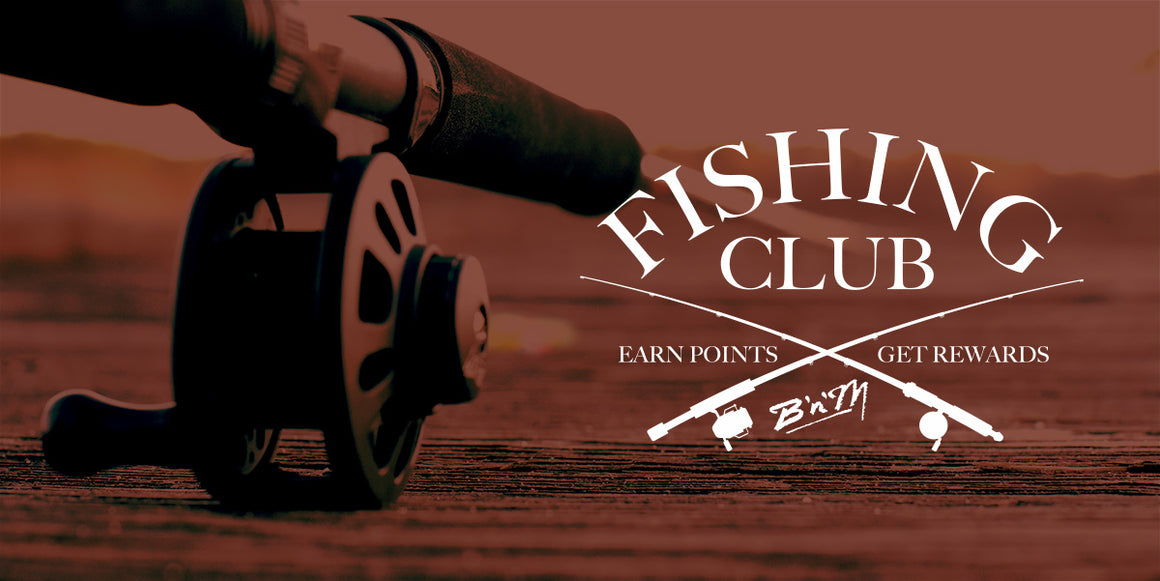
How to Pattern Crappie During Fall Conditions
How to Pattern Crappie During Fall Conditions
By Phillip Gentry
With Fall on the horizon, it is hard not to look back on the year 2020, at least from a fishing perspective, as the year of rapidly changing water conditions.
Crappie are as easily influenced by changing water conditions as any other freshwater species. Veteran anglers can gauge what effects changing water conditions and temperatures will do to crappie fishing patterns and adjust keep them on the fish.
The B’n’M pro-staff was more than happy to share some of their insights on how Fall conditions affect crappie fishing.
Look for Tree-Lined Creek Channels
B’n’M pro staffer John Harrison said one of his favorite go-to locations when water starts rapidly rising or falling during the fall is creek channels that have cover right in the edge of the water.
“There’s a lot of crappie that can be caught around those green iron wood bushes, especially during the late summer and early fall. Crappie come in here because they provide shade, cover, and a good place to ambush bait. The overhead shade will make this water just a little bit cooler and that helps draw the fish in,” he said.

Guide John Harrison said creek channels lined with green timber are great go-to spots in the fall.
Even when the water depth is changing, Harrison said crappie will still gravitate to this type of cover.
“That’s part of the secret too,” he said. “When the water is up, these bushes will have 12 to 14 feet of water under them. During the winter draw down these bushes will mostly out of the water. That keeps them alive and green through the rest of the year but that back and forth movement also washes out the roots a good bit and provides a great place for crappie to hold.”
Work Shallow Water Stump Flats
When the weather and water turn cooler, All-Seasons crappie guide Kyle Schoenherr can be found in the upper thirds of his Ohio home lakes, particularly Rend, which is noted for the amount of standing and submerged timber littering the edges of creek channels and scattered about over shallow flats.
“A lot of anglers would think twice about putting 16 hooks in the water and trolling into that mess,” said Schoenherr, “but that’s where the crappie are this time of year, so that’s where you need to be fishing.”
Schoenherr does not just go in blind. Like a seasoned deer hunter, the B’n’M pro-staffer spends plenty of time scouting, both before and during his fishing trips and he says it is imperative to play the wind in his favor.

Kyle Schoenherr tight lines deep in the cover when his Ohio crappie respond to fall conditions.
“Wind direction plays a big part,” he said. “Three straight days of wind from the same direction will stack baitfish up on the side of the flats on the windy side. The wind can make fishing hectic, but you have to learn to rely on it for boat control.”
Rather than just go with the wind, which gives the boater no control, Schoenherr will ease the boat into the back of the flat and then drop the trolling motor and push into the wind.
“Trolling in this sense really isn’t trolling,” said Schoenherr. “I can’t tell you a speed and say go point x miles per hour. It’s really a controlled drift, using the trolling motor to ease the lines into and over the edges of the submerged timber and letting the wind push you back off.”
Catch Them Retreating
Weiss Lake/Neely Henry, AL crappie fishing guide and B’n’M pro-staffer Carlton Teague will leave the shallow water boat docks he’s been fishing and head out to the edge of the main channel to intercept crappie on the retreat from the shallows as water starts to recede.
“Crappie will start to move out into deeper water once the water temperatures get below 70. By then, the thermoclines are gone and there is better oxygenated water through the whole depth range,” said Teague. “That’s also about the same time the water authority will start dropping the water levels.”

Weiss Lake guide Carlton Teague said crappie anglers should watch for crappie retreating from summer haunts once conditions change in the fall.
Teague puts away his single pole that he has been working the docks with and puts out his tight lining rods and starts working the edges of the main channel.
“One thing most people don’t understand about Weiss is how much the water level fluctuates between normal and winter pools,” he said. “Neely Henry may vary by less than a foot across an entire year. On Weiss, the normal pool elevation is 564. By late December, Weiss will be at the lowest of the year. That is a drop of around 6 feet. Losing 6 feet out of Lake Weiss is a lot.”
Teague said the best locations to tight line are along the edges of the main Coosa channel and a few of the major creek arms that also have deeper water in them.
Wherever fishing takes you, B’n’M has been there. To view all our fish catching products, Visit our website at bnmpoles.com
Also in Weekly Tips and Techniques

In The Kitchen with Kent Driscoll
B’n’M Pro Staff Manager Kent Driscoll not only knows a lot of ways to catch crappie, he knows how to cook them too.

North Louisiana Crappie Fishing Report with John Godwin
North Louisiana’s newest and most recognizable fishing guide, John Godwin, says the crappie fishing is beginning to heat up.

Catch the Crappie Madness Seminar Series
Water temperatures are starting to rise, which can only mean one thing: prime crappie fishing season is right around the corner. There’s only a few weekends left to prepare for the bite.

